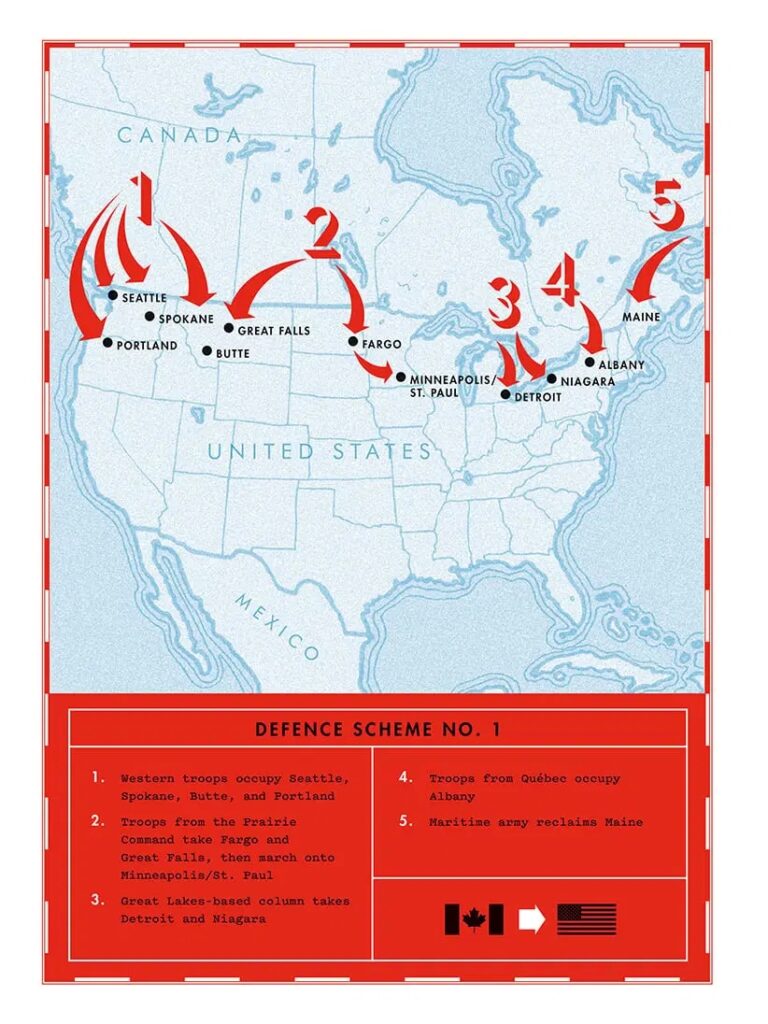Defense Scheme No. 1: How Canada Planned to Counter a US Invasion

In 1921, faced with the possibility of American aggression, Canadian military planners developed an innovative defensive strategy: Defense Scheme No. 1. This wasn’t a plan for unprovoked attack, but rather a carefully crafted response if the United States ever decided to invade. The strategy was bold – if war seemed imminent, Canadian forces would launch lightning raids into US territory. But this wasn’t about conquest. It was a calculated defensive plan designed to disrupt American military mobilization and buy precious time for British reinforcements to arrive.
The scheme’s logic was rooted in practical military reality. Knowing they couldn’t withstand a prolonged US invasion, Canadian strategists developed a plan for strategic disruption. If attacked, Canadian forces would target key cities: Seattle, Portland, and Spokane in the west; Minneapolis and St. Paul from the Prairie Command; Detroit and Niagara from the Great Lakes; and Albany from Quebec. Meanwhile, forces from the Maritimes would move to secure Maine.
To ensure the plan’s viability, Canadian military officers conducted careful reconnaissance of American border towns, often in civilian clothes, mapping potential routes and gathering tactical information.
The plan wasn’t created in a vacuum. During the same period, the United States military developed “War Plan Red,” a comprehensive strategy for potential conflict with the British Empire, with Canada as a primary target. This American plan, finalized in 1930, focused on swiftly capturing Canadian ports and cities to prevent British reinforcements – precisely what Defense Scheme No. 1 was designed to prevent.
These historical defensive preparations have gained renewed attention following former President Trump’s recent comments about making Canada the “51st state” through economic pressure. While today’s context is economic rather than military, it highlights the ongoing importance of Canadian sovereignty.
The plan was shelved in 1928 – military leaders eventually decided it might cause more problems than it would solve. But it shows how creative military planners had to be when dealing with a much stronger potential opponent.
What’s your take on this defensive strategy? How do you think it might have played out if it had ever been needed? Share your thoughts in the comments below.








